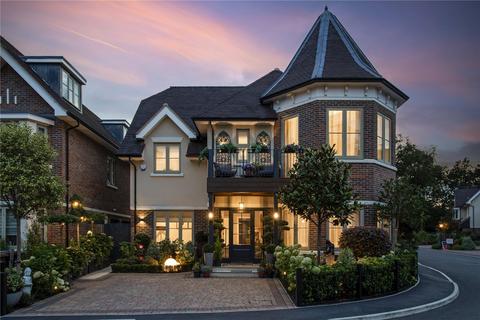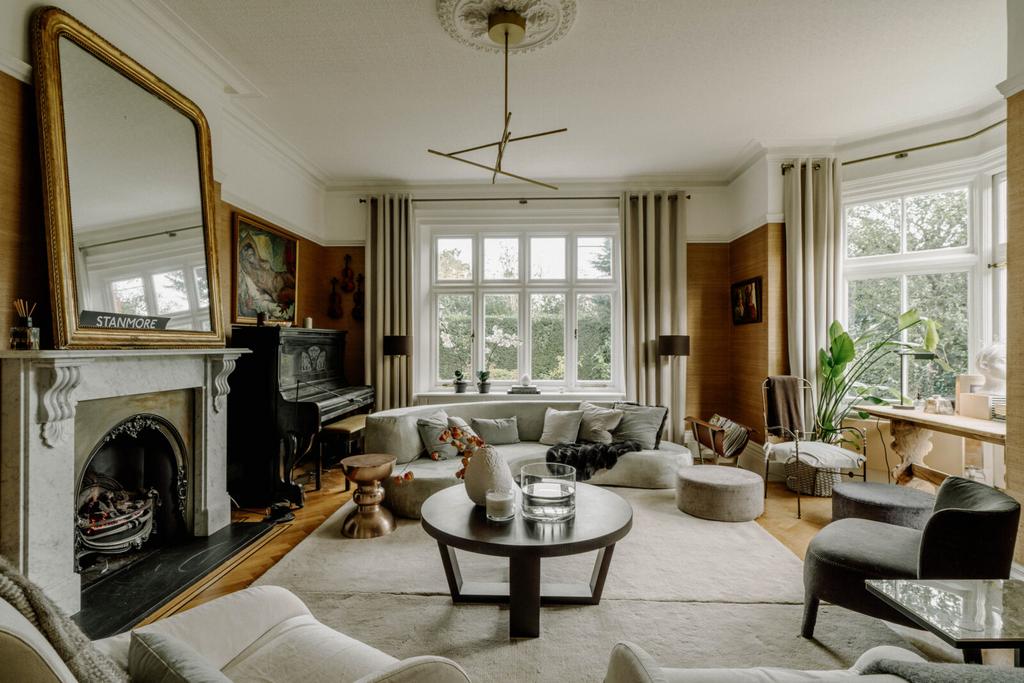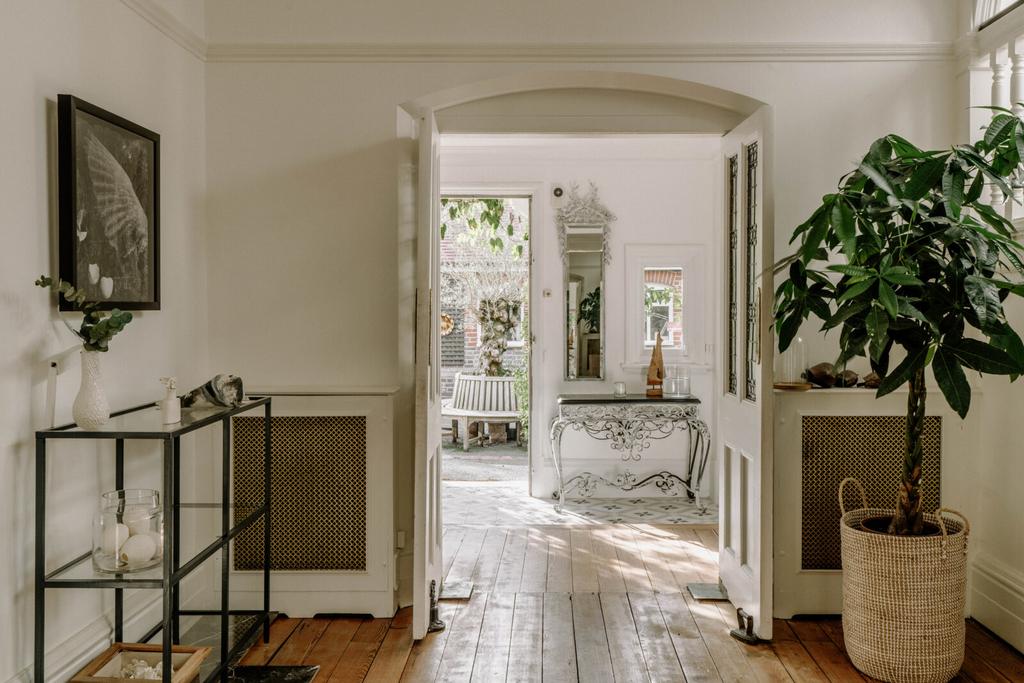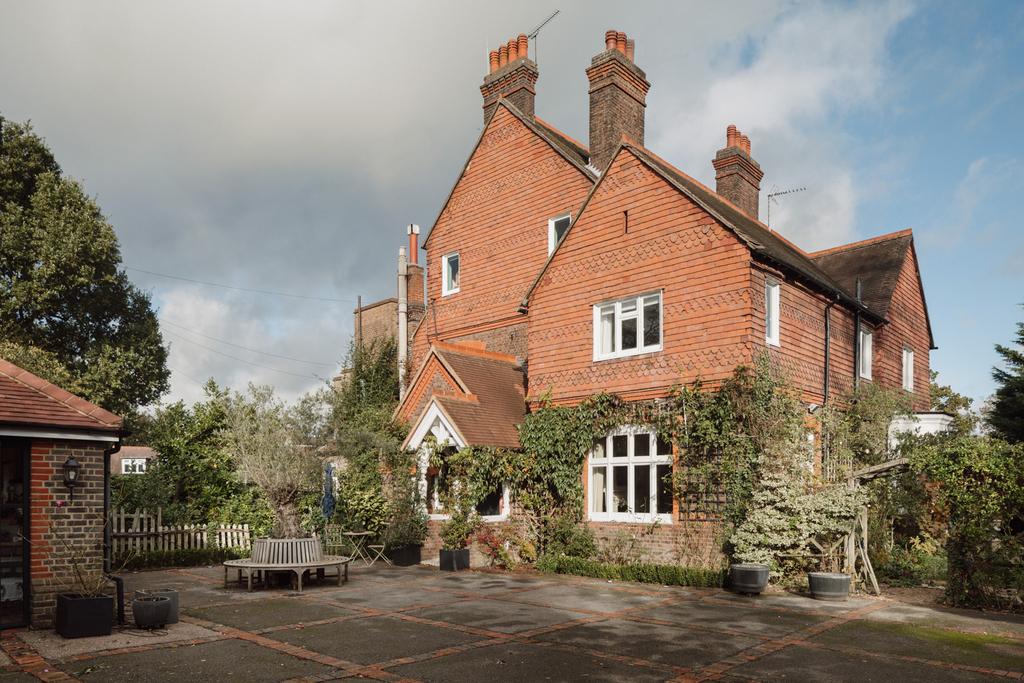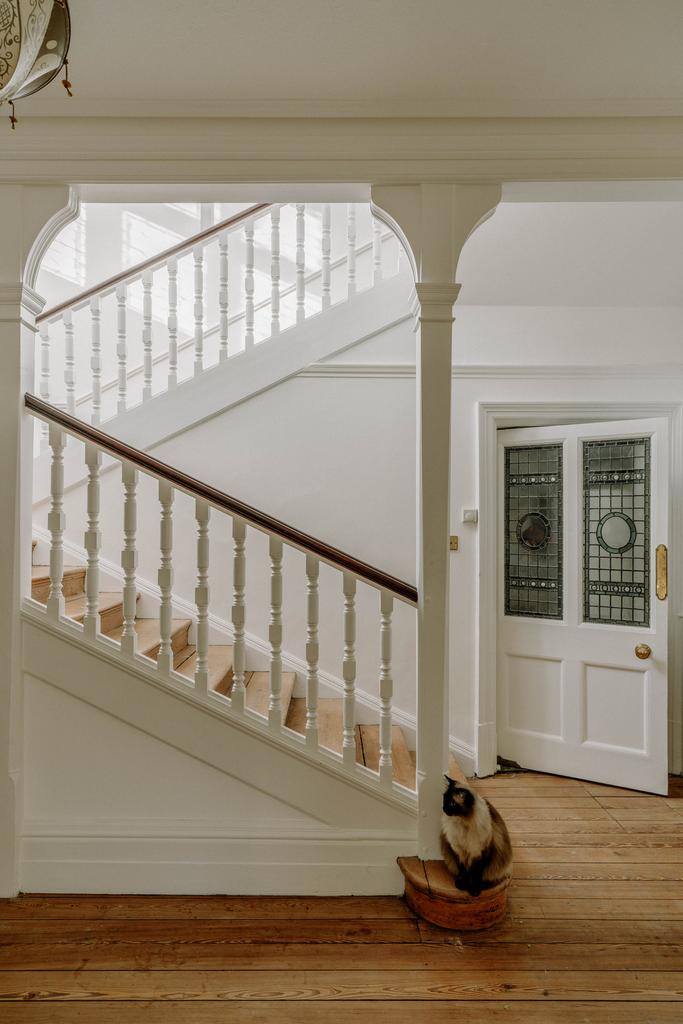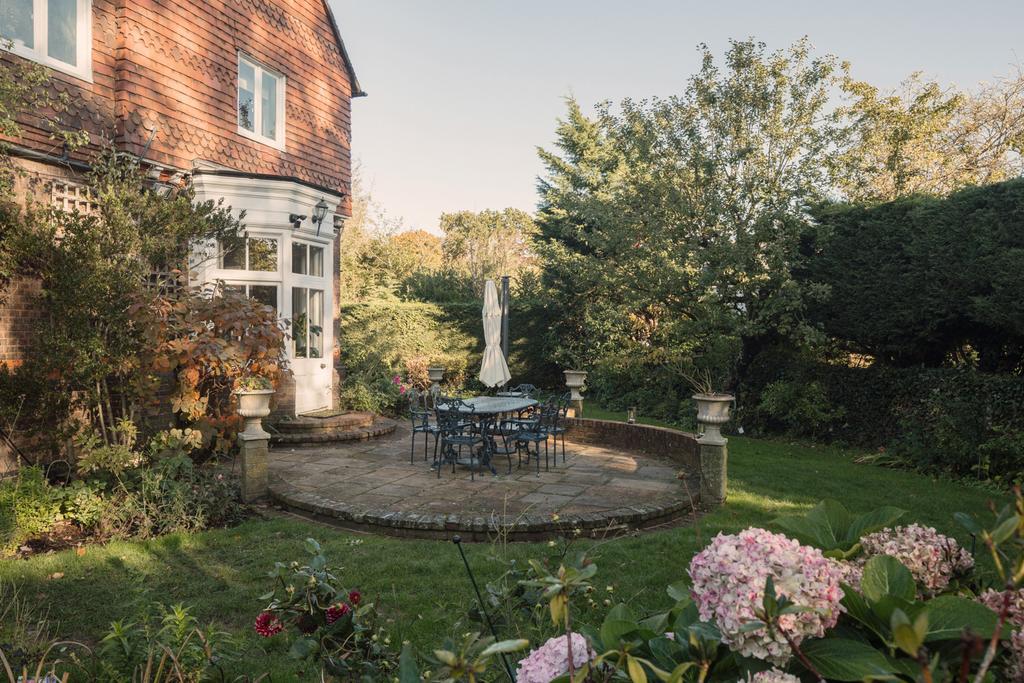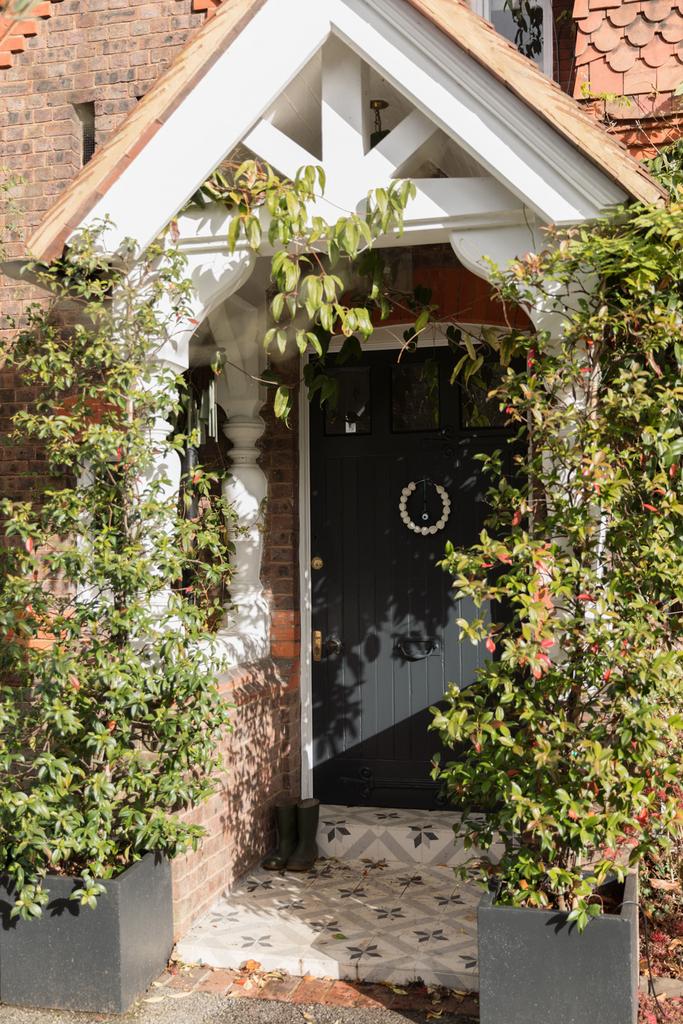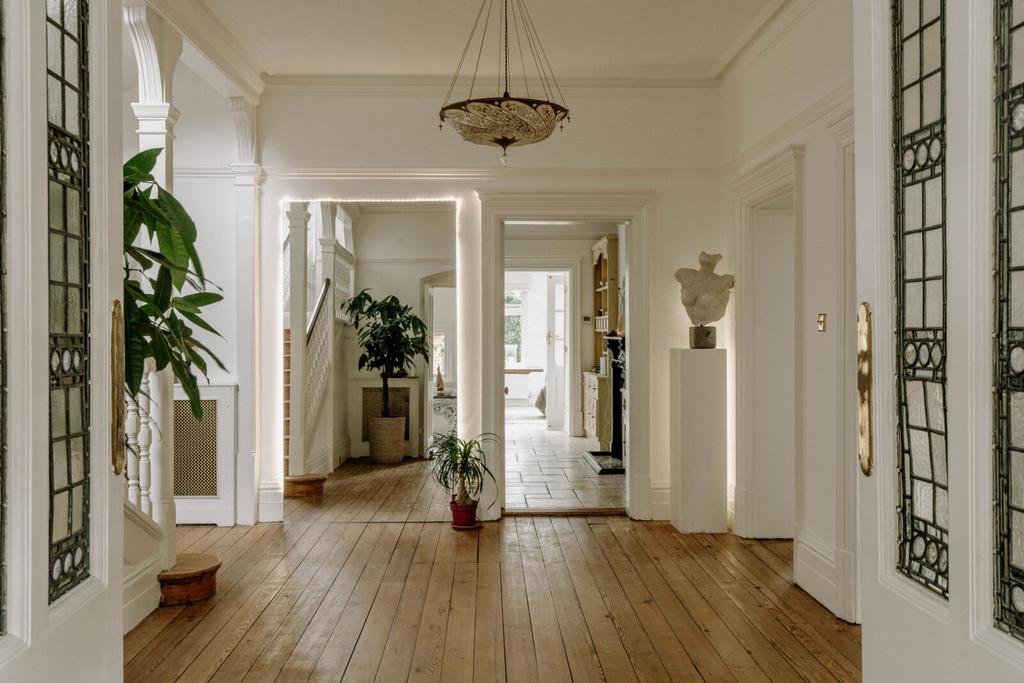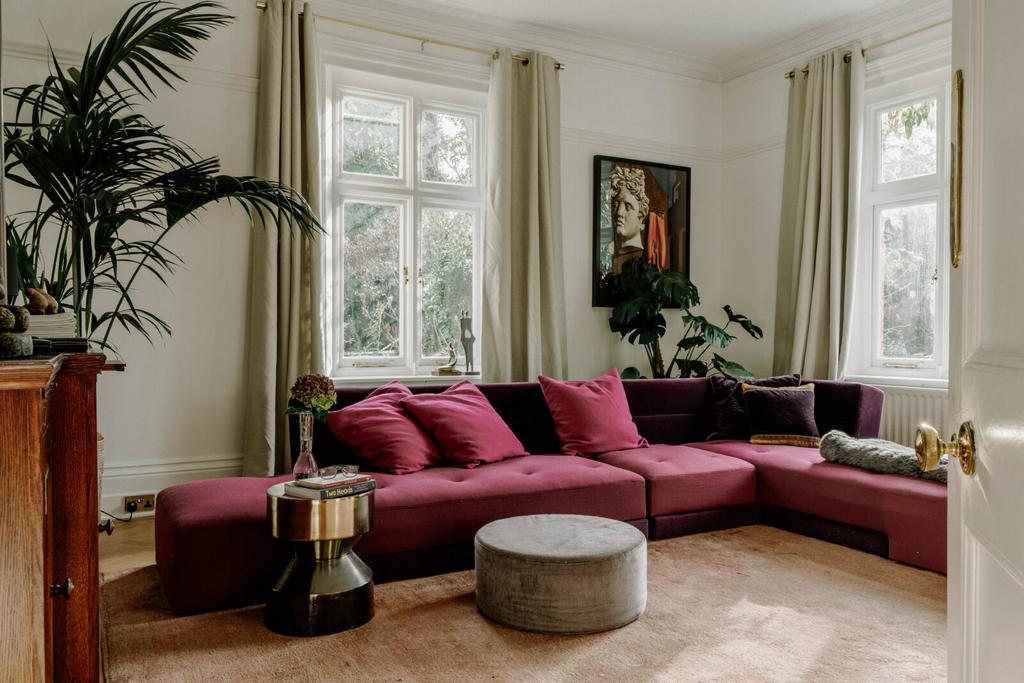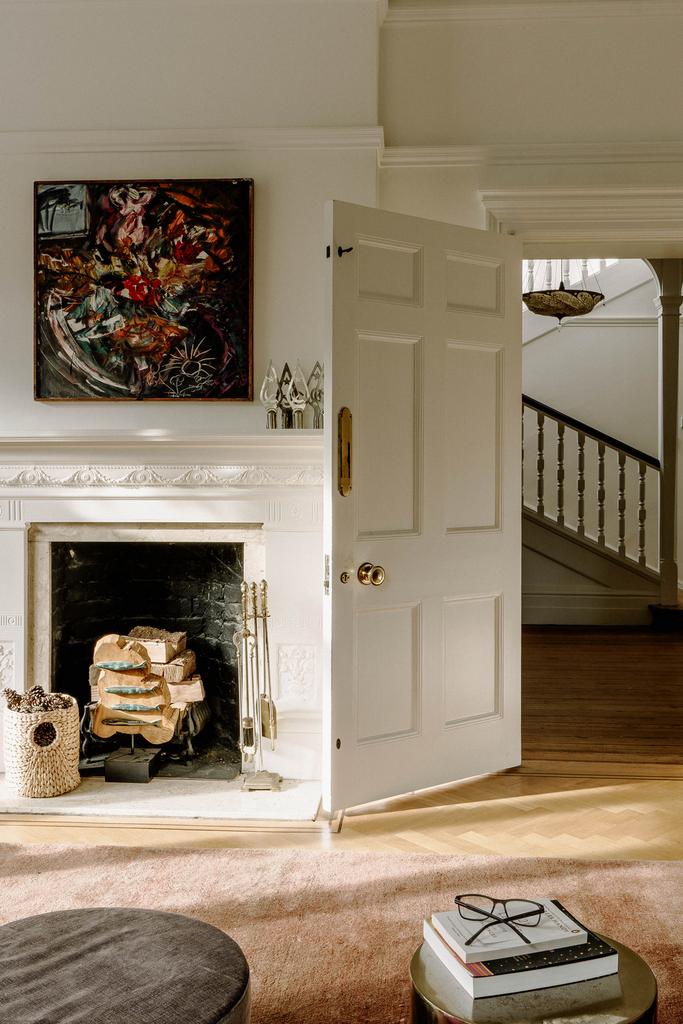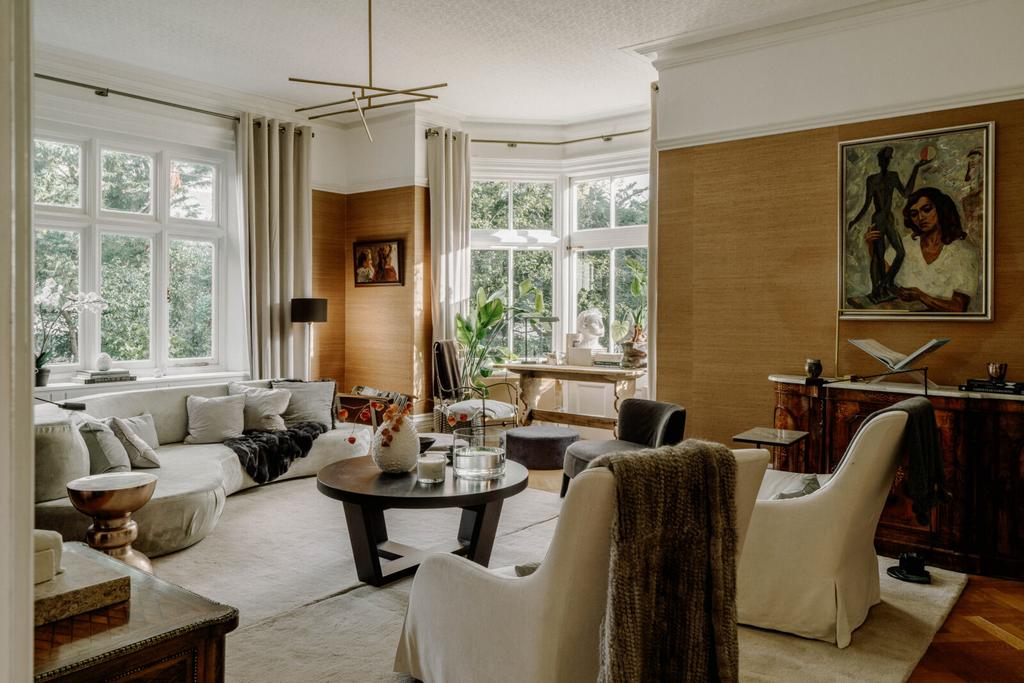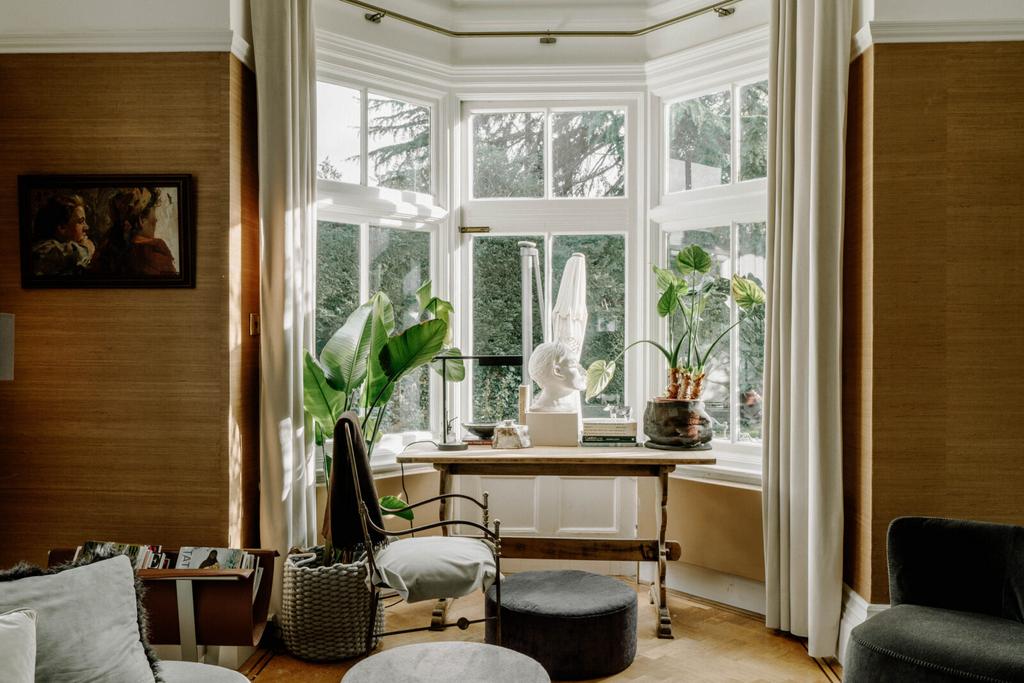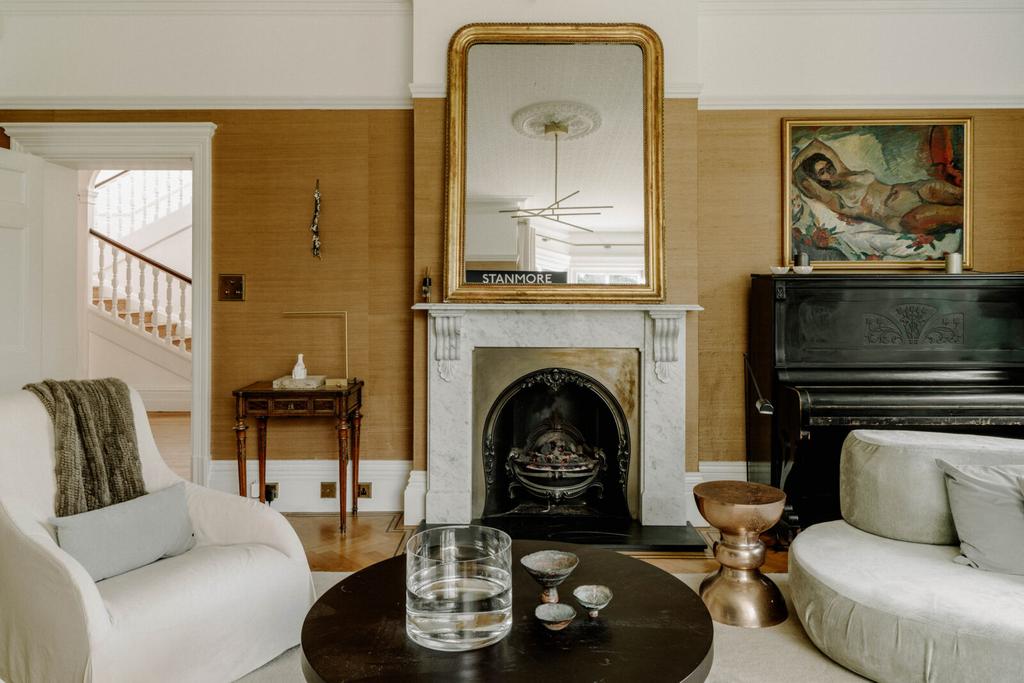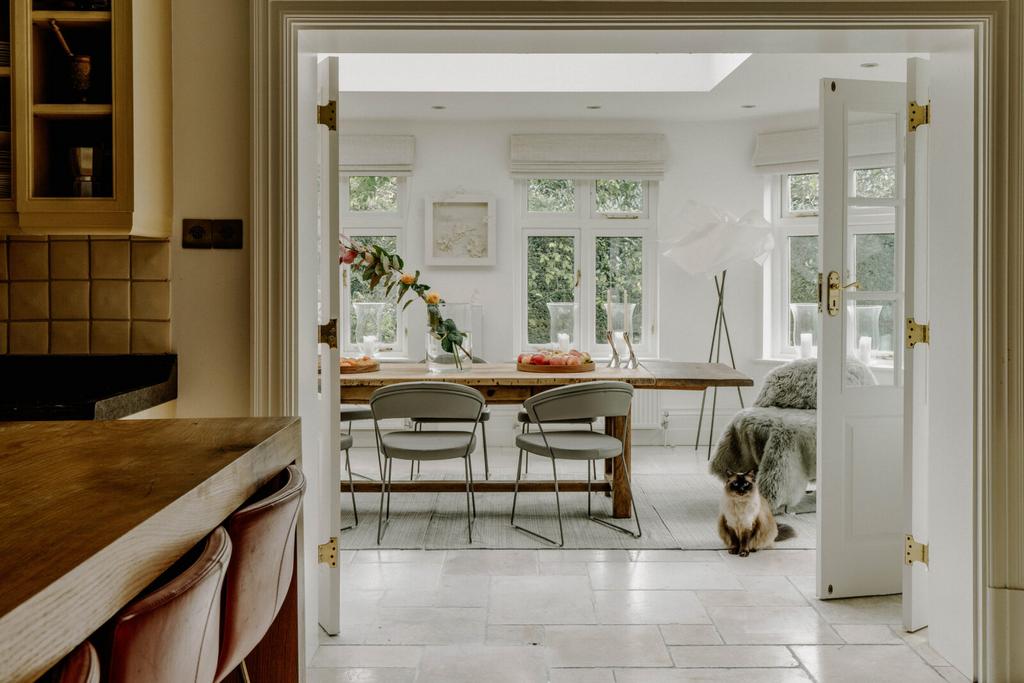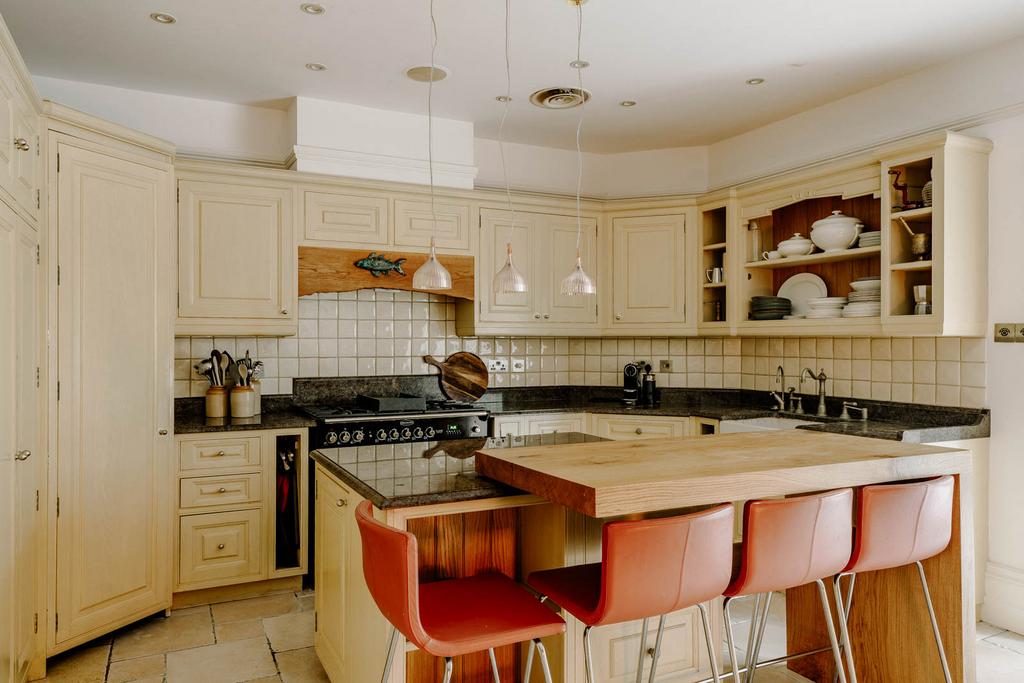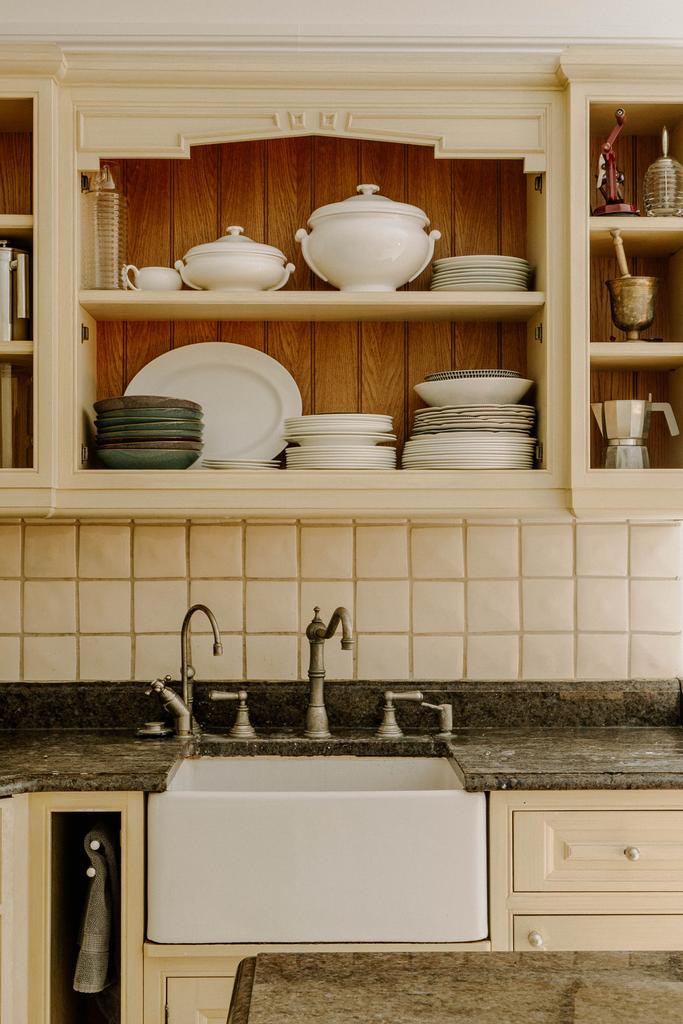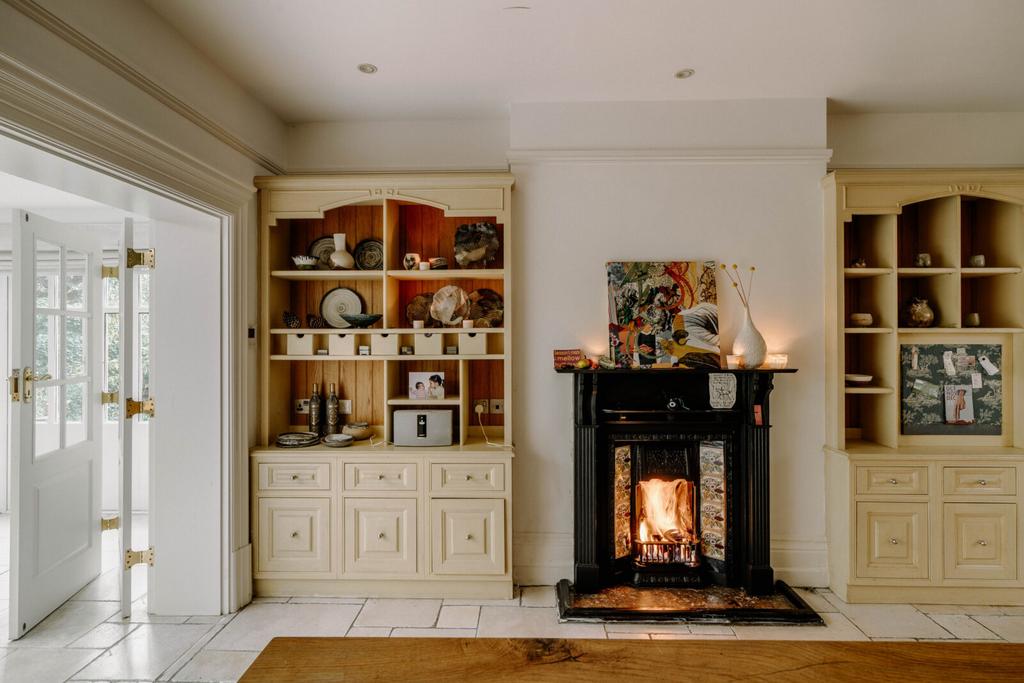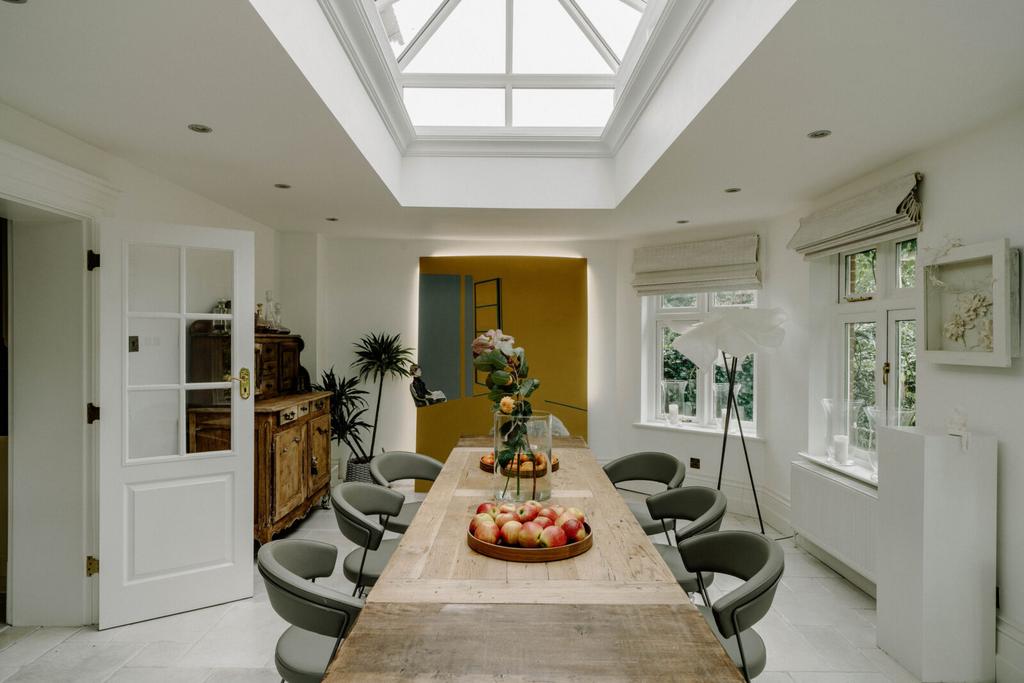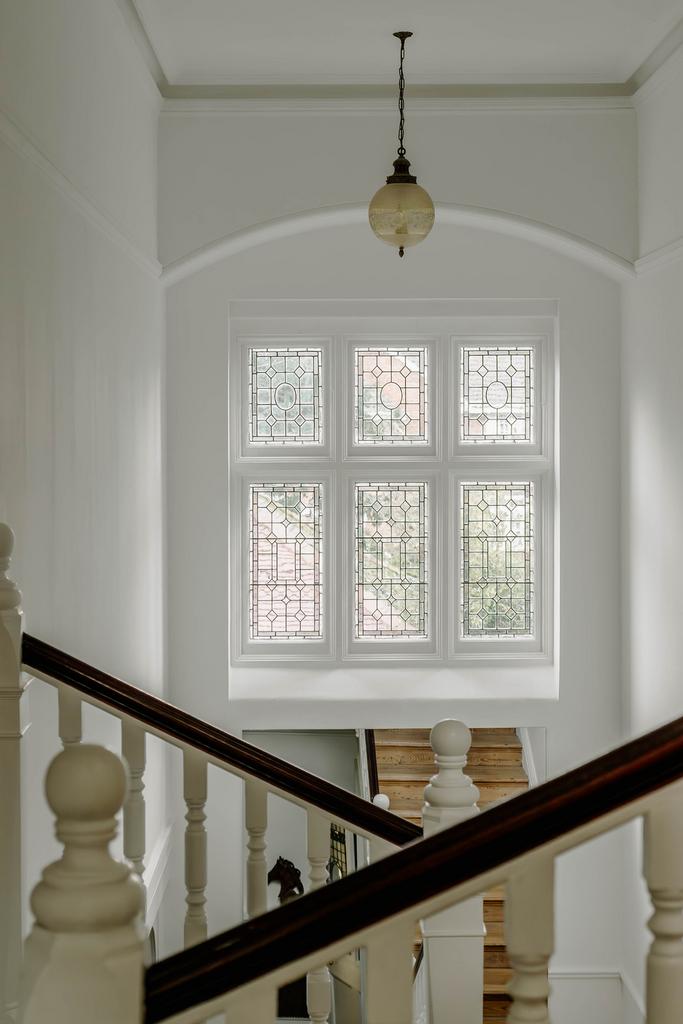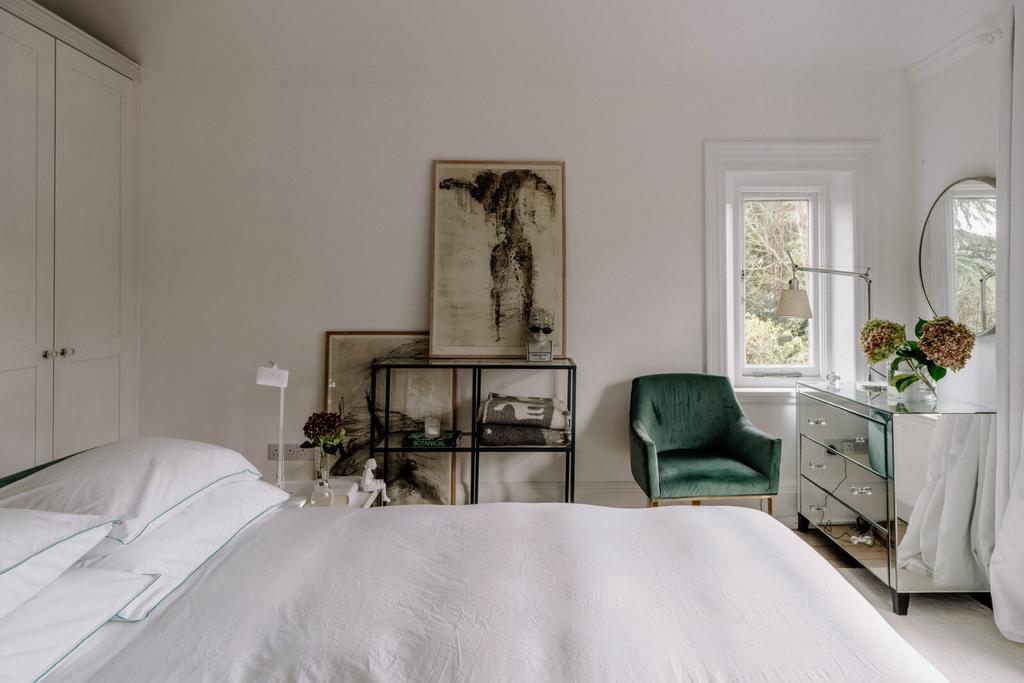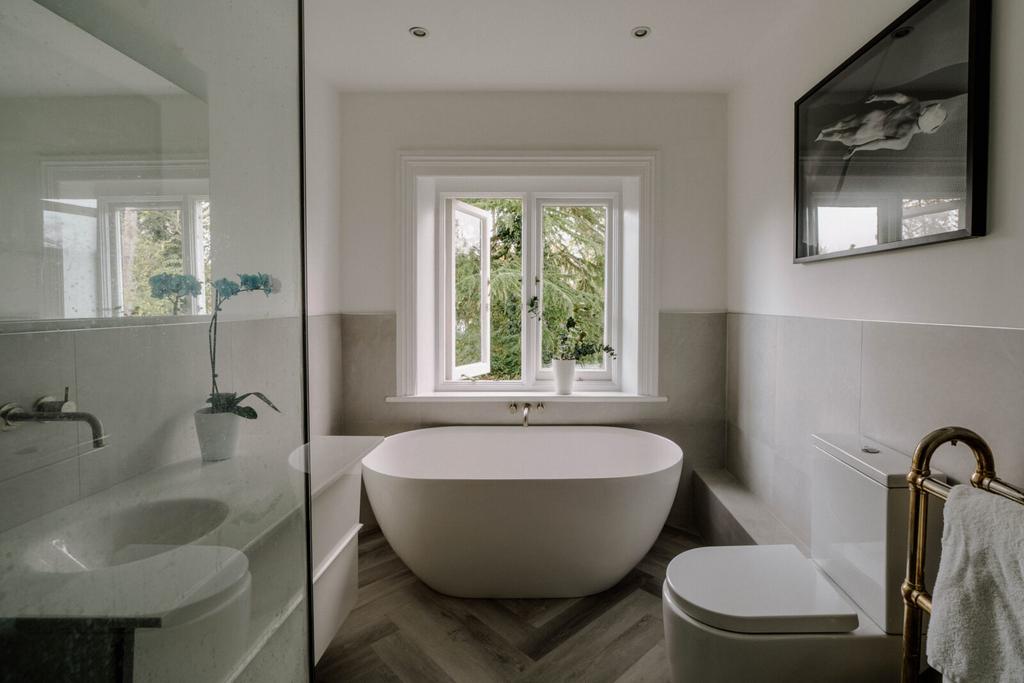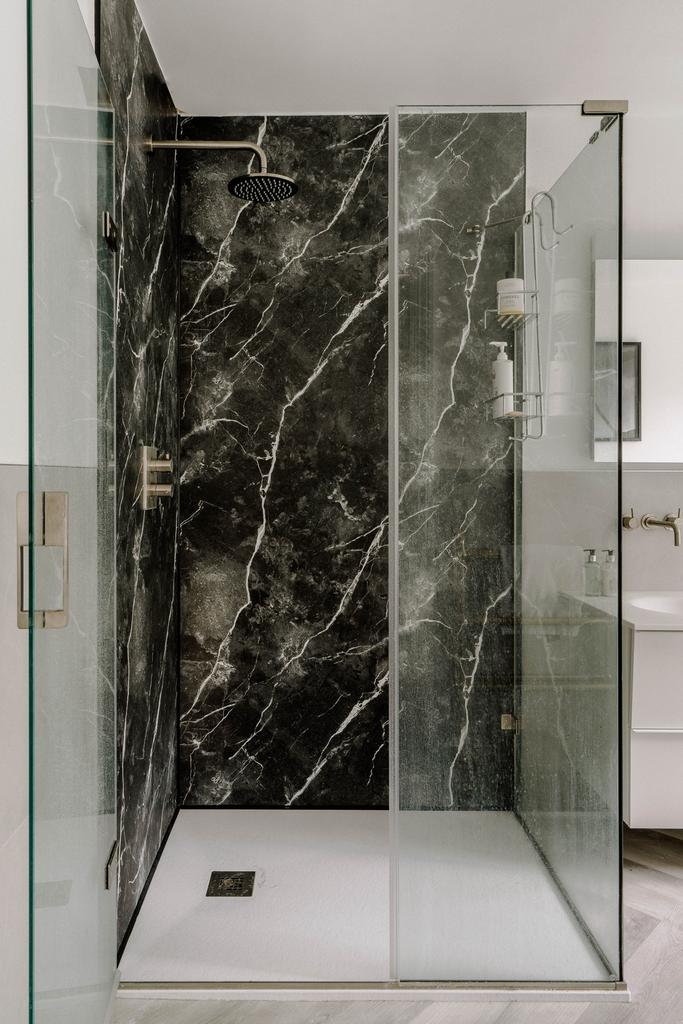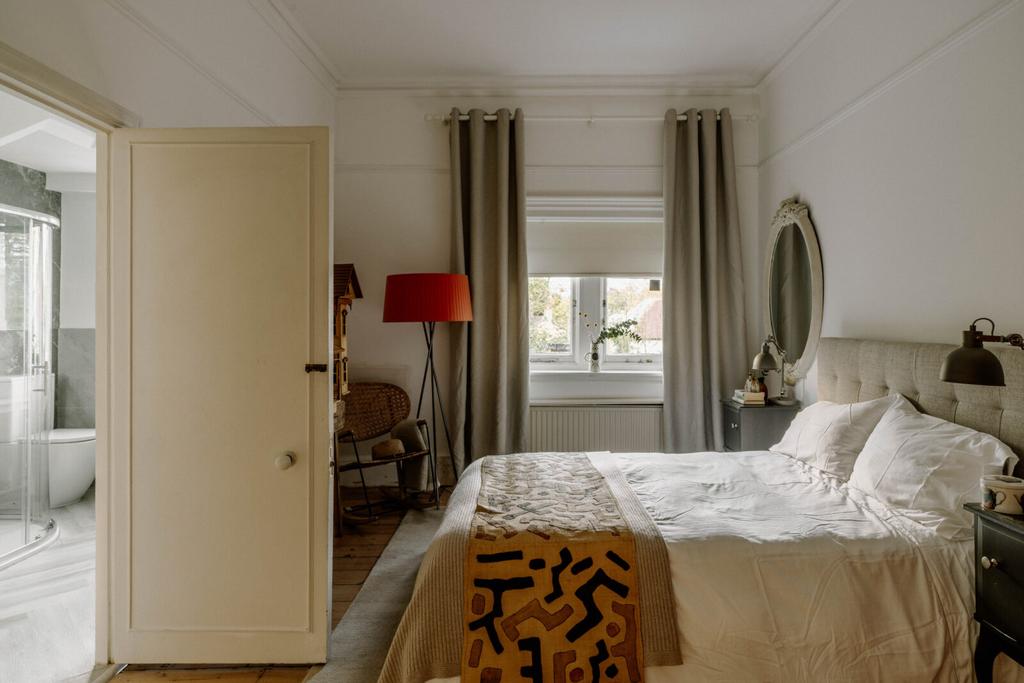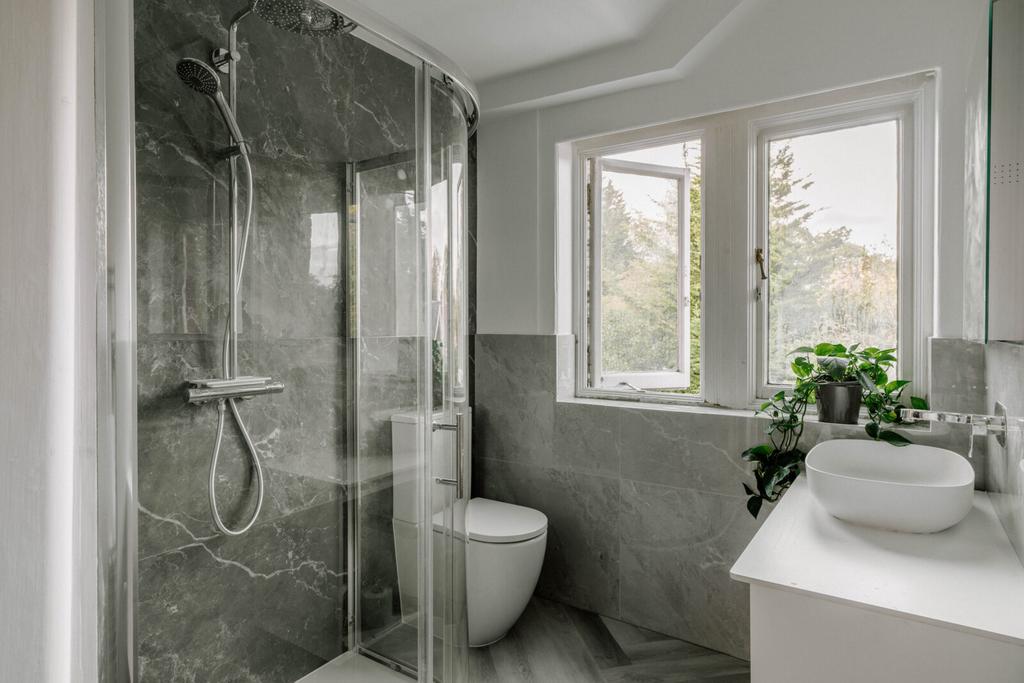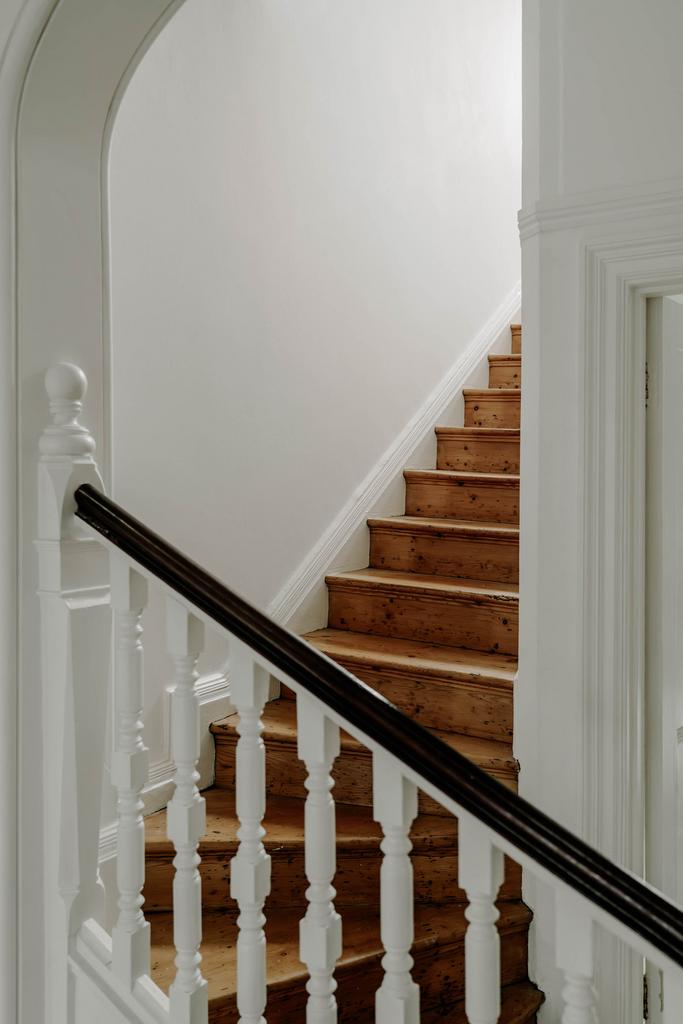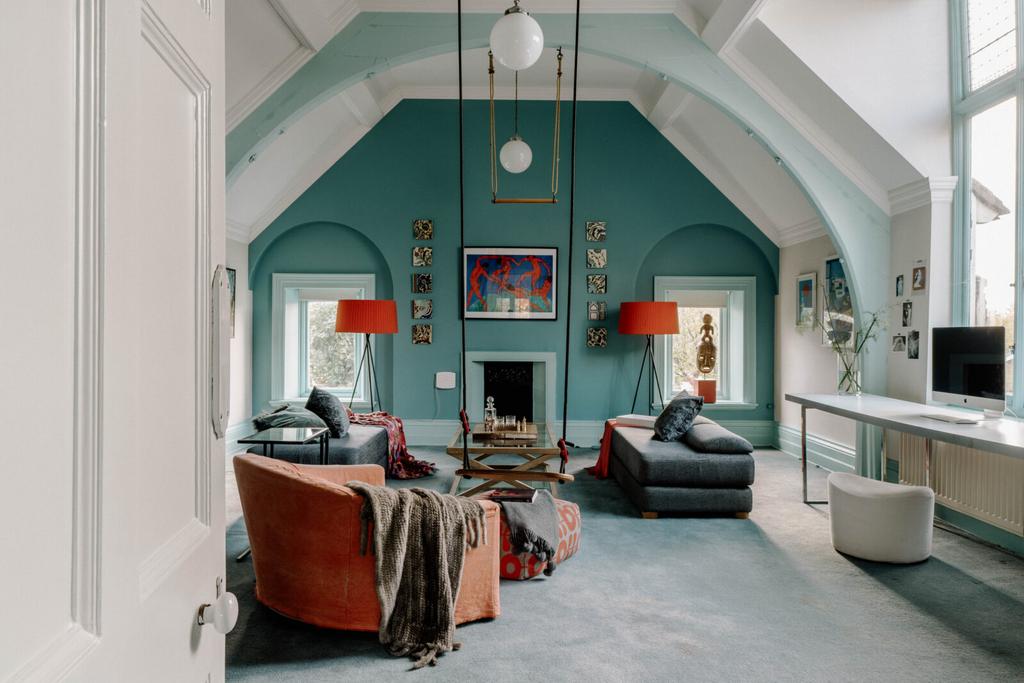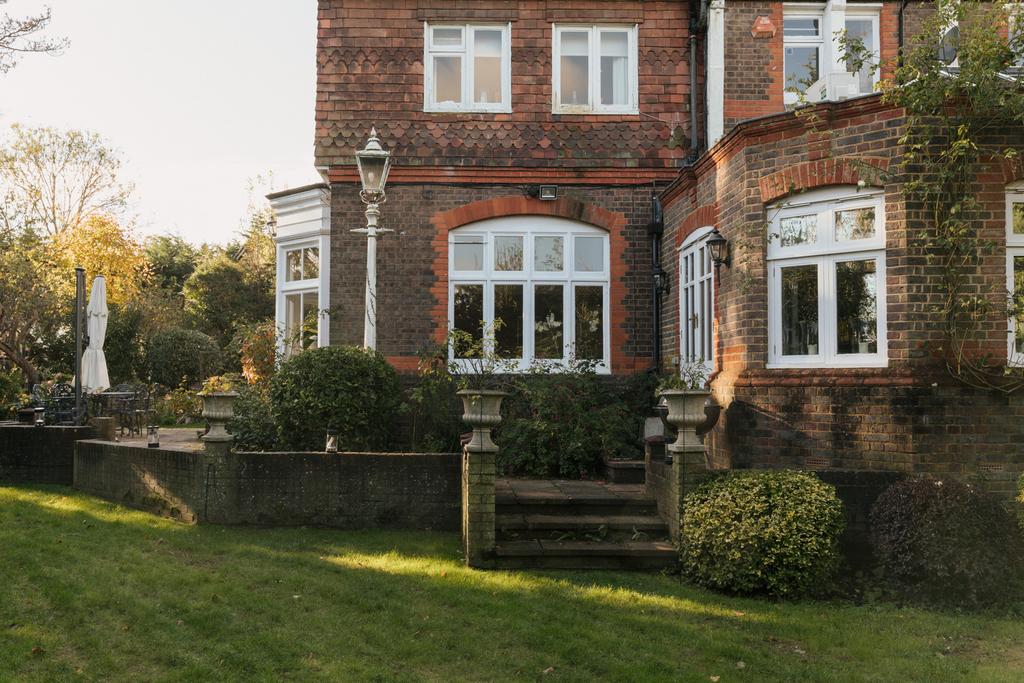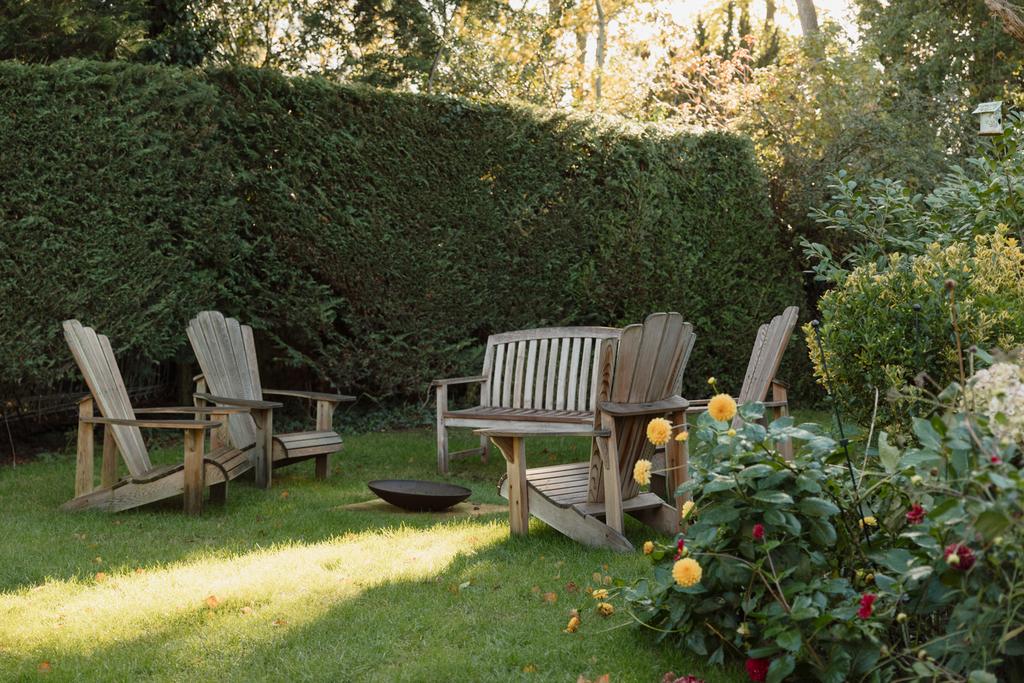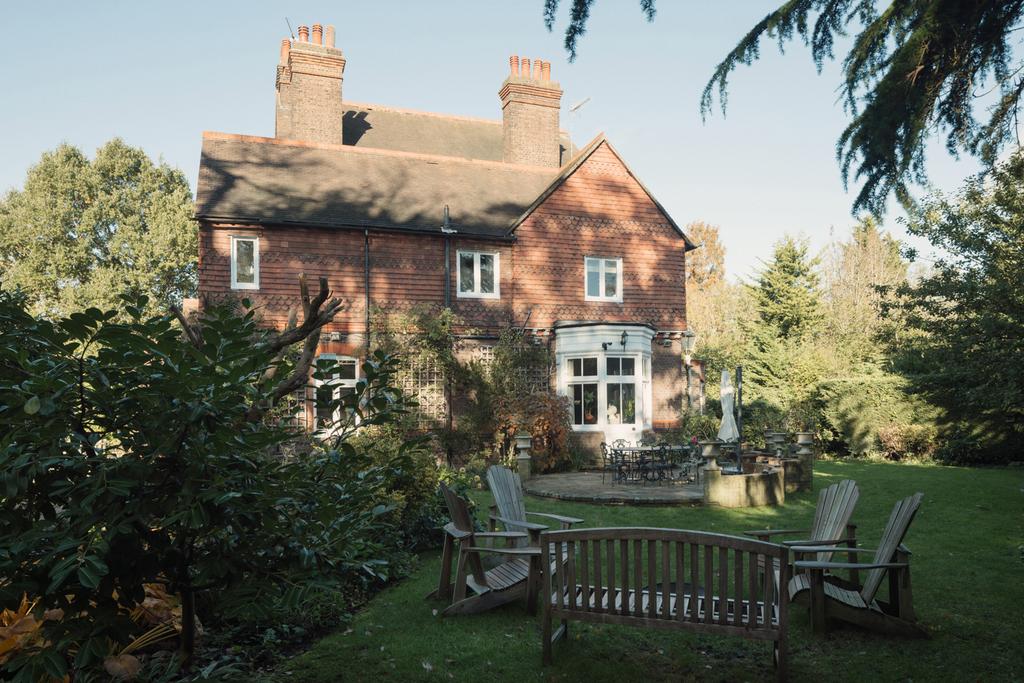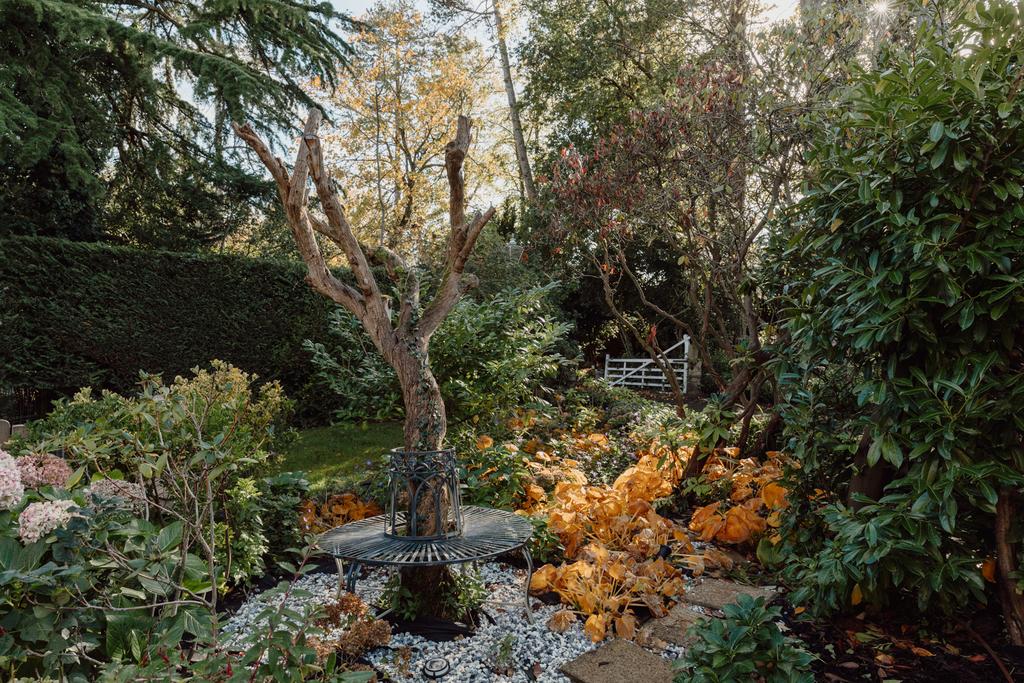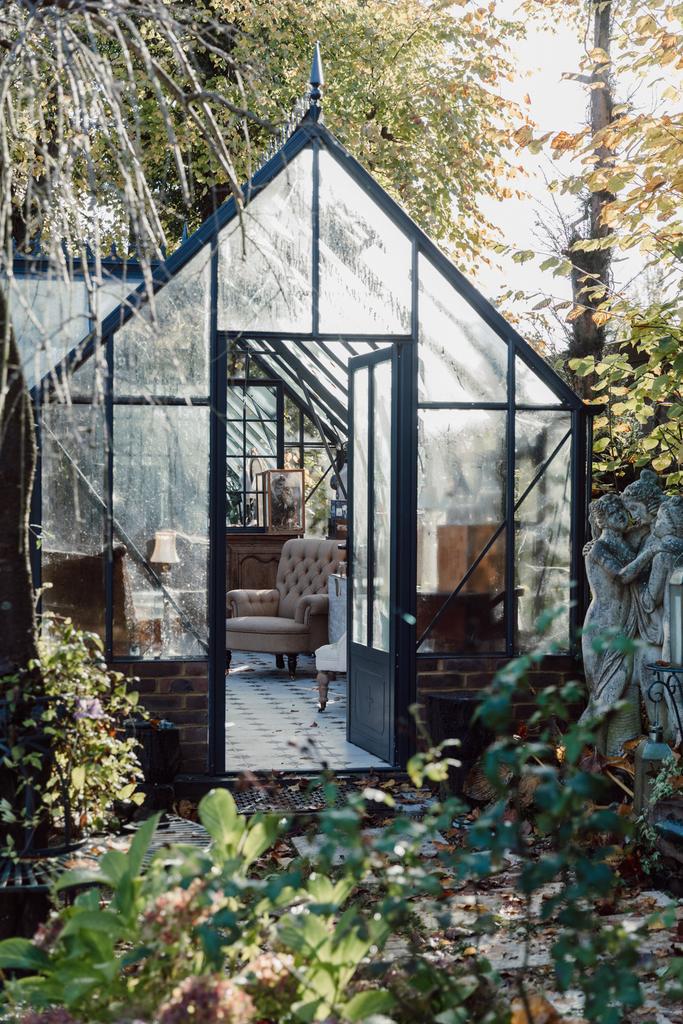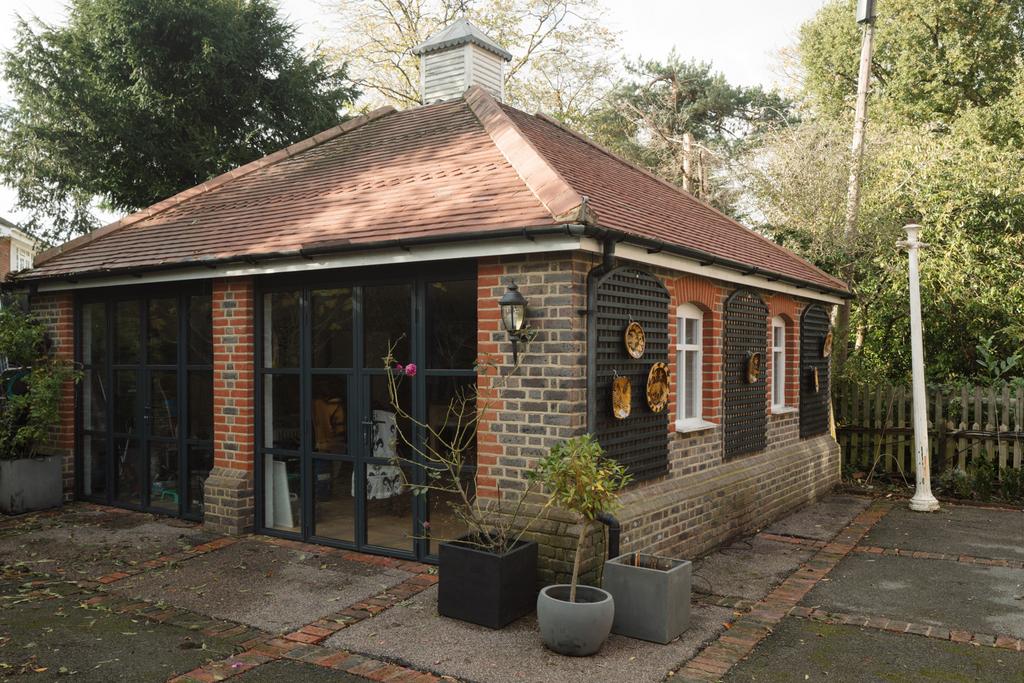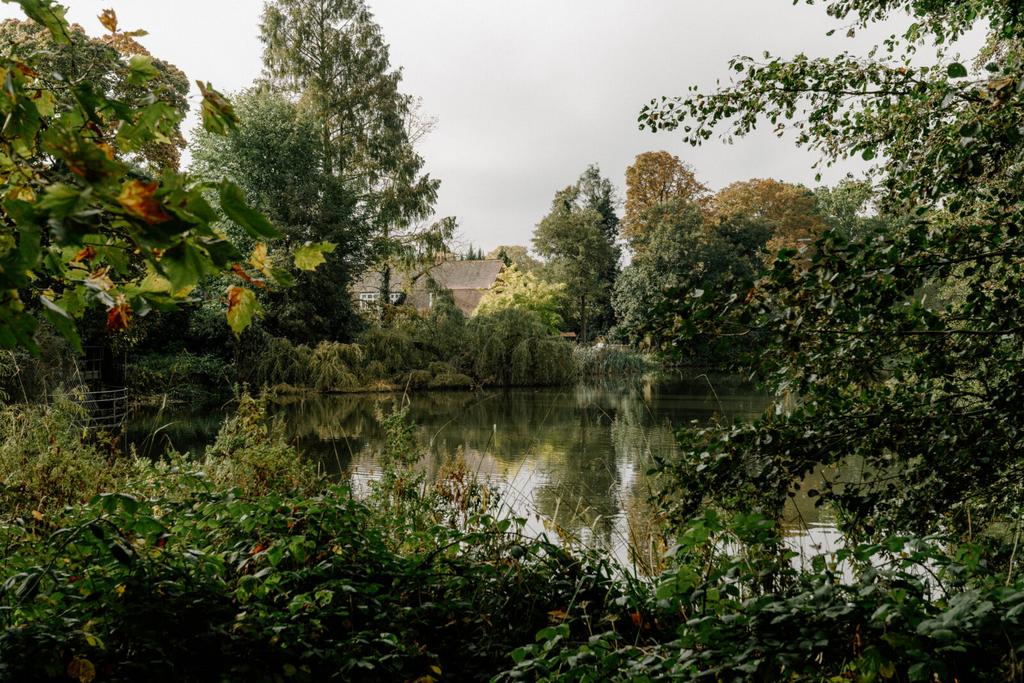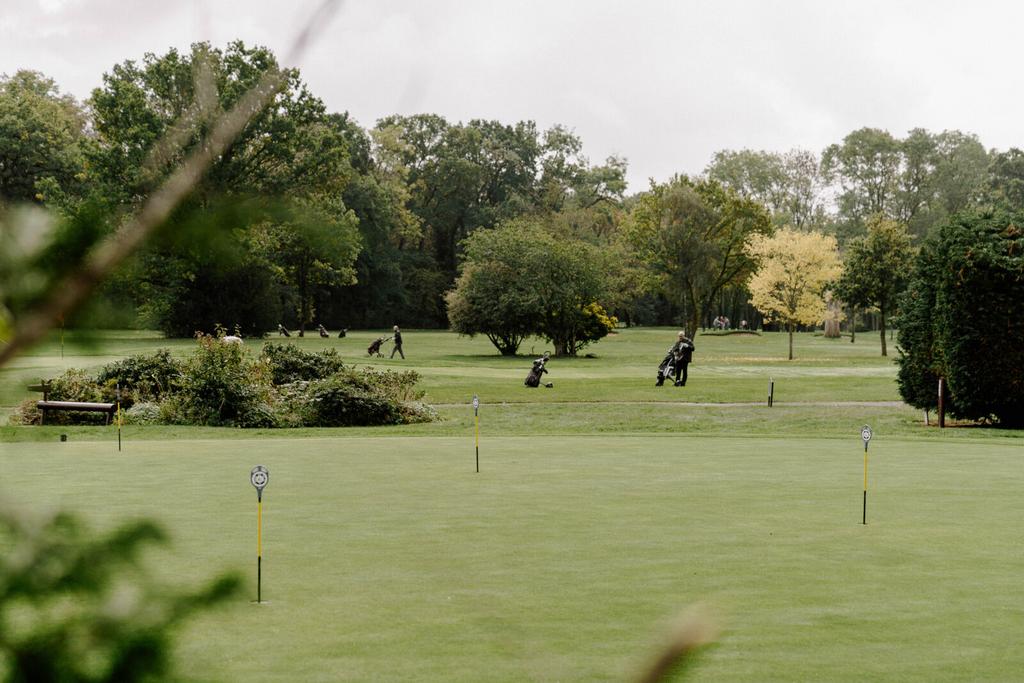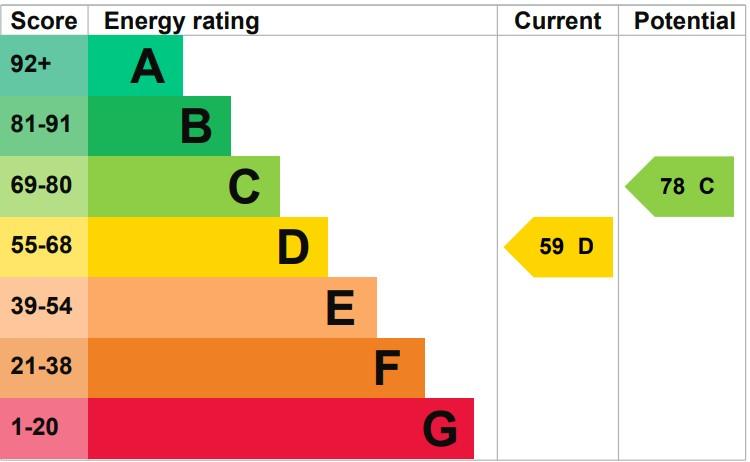No longer on the market
This property is no longer on the market
Similar properties
Discover similar properties nearby in a single step.
5 bedroom semi-detached house
Study
Semi-detached house
5 beds
3 baths
3,489 sq ft / 324 sq m
Key information
Tenure: Freehold
Council tax: Ask agent
Broadband: Ultra-fast 1000Mbps *
Mobile signal:
EEO2ThreeVodafone
Features and description
- Tenure: Freehold
This fine Victorian villa is situated in Stanmore, north London. Built in the Arts and Crafts style, it was designed by Alfred Waterhouse, the acclaimed architect of the Natural History Museum in South Kensington. The house has five bedrooms and remarkably elegant proportions, with a wonderful sense of light and airiness; internal accommodation extends to almost 3,500 sq ft set over three storeys, with a spacious ancillary garden studio set in an immaculate mature garden. Countless original architectural features have been carefully preserved, including exquisite chimneypieces, joinery, plasterwork, and fenestration. Connections to Central London and Heathrow Airport are excellent, while Stanmore itself has wonderful pubs, restaurants, cafés, and shops.
Setting the Scene
The home is positioned on the north-west side of Gordon Avenue, considered to be one of the finest roads in Stanmore and one of the first residential roads to be laid out in the town by Frederick Gordon. The peaceful road is lined with mature trees, with this house set at its eastern end, just south of Temple Pond. There are few clues from the road that a fine home is discretely set at the very end of a driveway, which is surrounded by mature trees including Corsican pine; the approach to the house allows a wonderful sylvan vista.
The driveway opens to an expansive courtyard-cum-parking area, laid with a spacious grid pattern of square-set red bricks, responding to the house’s main façade. Surrounded by its gardens, the main house and ancillary buildings form a secluded compound of sorts, with a newly built Victorian-design greenhouse to the west of the plot acting as an additional summer room. There is a spacious red brick garden studio with a pitched clay tile roof immediately to the north-west, with the main house to the north-east.
Pevsner recorded the house in his seminal record ‘The Buildings of England’ as a late work by Alfred Waterhouse, whose interior design blended elements of classical Romanesque style such as rounded arches and ornate columns with perfect hierarchy of structural proportion externally. The house remained a single large dwelling till the 1950s when this principal part of the greater house was divided from the smaller part to the rear. The house was named Herondale by its first occupants and, despite its excellent architectural provenance, remains unlisted. For more information, please see the History section.
The Grand Tour
The house has a grand appearance, with red brick elevations to the ground and first storeys punctuated by several intermittent courses of grey brick; terracotta tile-hung irregular dormers and gable ends are set above. Terracotta was a signature material in many of Waterhouse’s designs, both domestic and commercial. The roofs are of varying steep pitches, with three tall red brick chimney stacks intermittently reaching to the sky. Fenestration is comprised of original casement and French windows, some with leaded and stained-glass lights. Variously, clematis, wisteria, jasmine, honeysuckle and climbing roses envelope the ground floor elevation, allowing a wonderful scent in warmer months. The tall entrance porch is set to the side of the house and has a further tiled pitched roof, inset with the original plank door and featuring three lights in a row just above eye level.
The porch opens to the entrance vestibule, with underfloor heating and terrazzo tiles extending to a guest WC at the side. From here, wedding doors inset with stained glass open to the home’s main square set hall, with scrubbed pitch pine floorboards extending underfoot. A voluminous space with a great sense of airiness and light, architectural details that reoccur throughout the house feature most prominently here, including Romanesque rounded arches and ornate joinery and supporting columns. Six-panel doors with exceptional surrounding architraves open to the main reception rooms that lead from the hall, and a grand dogleg staircase with wide treads and finely turned balusters leads to the first floor. A large stained glass window set midway at the staircase’s turn floods the hallway with a westerly light.
The two principal reception rooms are adjacent, both with oak parquet flooring and exceptional plasterwork. The sitting room has large windows at both its southern and westerly aspects, and a fine white-painted chimneypiece with an iron basket. The larger drawing room also features fenestration and its two aspects, with an exterior glass door set into a canted bay, opening to the garden terrace. Walls are lined with honey-coloured grass cloth paper and the Carrara marble chimneypiece, surrounding a working fire, grounds the room.
Tumbled marble flags connect the spacious kitchen and adjacent dining room, with the latter space set in a light-filled orangery with four casement windows, French windows that open to the garden terrace, and a glass roof lantern set above. The kitchen cabinetry is by Mark Wilkinson Kitchens, made bespoke entirely from oak. An island unit is positioned centrally and slabs of honed grey granite act as work surfaces. A black enamel Rangemaster cooker is inset within cabinetry along one wall and integrated appliances are by Miele; a Quooker tap allows for hot water on demand. Further fitted dressers are set into alcoves, surrounding a pretty chimneypiece with faience tiles and a working fire. A further laundry and utility room with plentiful storage is set off the hallway.
The first floor has a wonderfully spacious landing, with the vast stained-glass window positioned above the staircase allowing for a wonderful soft light. Two double bedrooms share a wonderful contemporary shower room, with one of the bedrooms sharing a Jack and Jill arrangement from the main landing space. The principal bedroom features walls of custom-built floor-to-ceiling wardrobing with illuminated interiors and a spacious en suite bathroom with contemporary polished stainless steel brassware and white porcelain sanitary ware. An oval freestanding bath is set beside the window, with a further separate shower enclosure and the vanity unit is inset with an Artelinea opalite glass sink. A fourth bedroom on this floor is currently configured as a library and study.
The uppermost storey is a remarkable space, affording great versatility. Originally a Victorian artist’s studio, this double-height space is over 25 ft deep and can act as either a dramatic bedroom, working studio space or further reception room. Arched beams define the room architecturally, and a double-height window faces north, the very best light for painting portraiture as it was originally intended. The room also has a fireplace at its very end, and a small adjacent room currently used as a service room could easily be converted to a further shower room if required; water and electricity are already connected.
The Great Outdoors
The gardens envelop the house, with the immaculate lawn set to the immediate front of the building, and the spacious courtyard and ancillary buildings to the side, at the western part of the plot. A circular paved and raised terrace opens from the drawing room and extends to the orangery and dining rooms at the east range of the home. Deep flower beds surround the main house and further buildings, with dahlias, roses, peonies, geraniums, and lavender; further herbs include fennel, sage, thyme, dill, and mint. The plot is surrounded by mature trees including Corsican pine, and further apple and damson trees are set at the edges of the garden. There is an extensive irrigation system with automatic pop-up sprinklers and a drip feeder network for the beds.
Ancillary buildings are set around the courtyard and include a summerhouse some 500 sq ft in size internally and built on a square set plan; it is positioned nearest the house. Built from red brick to compliment the main house and with a hipped clay tile roof, the south-facing façade is comprised of aluminium framed full-height windows inset with two sets of French windows, spanning the entire width of the building. Currently used as an artist’s studio, the building could be adapted for other uses, including ancillary or overflow accommodation, subject to local planning consents.
The newly built Victorian-style greenhouse has also been thoughtfully designed to respond to the architecture of the main house, built from brick at ground level with a pitched glass roof and patterned tiled floor. It can be used either for horticultural purposes or as a delightful outdoor entertaining space during nighttime or in inclement weather.
Out and About
Stanmore is brilliantly served by local amenities, while also close to Elstree, Bushey and Borehamwood, and north London. Independent cafés and restaurants are dotted along The Broadway and High Street in Stanmore, with further excellent pubs and restaurants in the aforementioned surrounding towns. A large branch of Waitrose is just three minutes’ drive away in Harrow Wealdstone.
Cultural facilities in the area are excellent and include independent cinemas The Reel in Borehamwood, The Rex in Berkhamsted and Everyman in Barnet.
Sporting and recreational facilities are incredibly well catered for in the area with Stanmore cricket and golf clubs situated close by, sailing at Aldenham Country Park, together with the David Lloyd and Village fitness centres. Additionally, North London Collegiate School’s sports facilities are available upon membership and include an Olympic size indoor swimming pool and gym. Elm Tennis Club is within walking distance.
Green spaces are plentiful, with Bentley Priory Open Space and Nature Reserve with deer park, woodland and summer lake just to the north of Gordon Avenue; Stanmore Country Park, Stanmore Marsh and the Grim’s Dyke estate are also nearby.
There are several excellent independent and state schools at both preparatory and senior levels locally, including Haberdashers Askes, North London Collegiate and Merchant Taylors. In addition to the excellent schools nearby, City of London school for boys and girls, Westminster School, UCS, Highgate School and South Hampstead School for Girls are all easily accessible on the nearby Jubilee, Northern and Metropolitan lines.
Stanmore Station (Jubilee Line) is a 15-minute walk away, with trains to Central London and The City in under 30 minutes. The M1, M25 and M40 are all located nearby. It is just a 40-minute drive to London Heathrow Airport from the house and 30 minutes by car to London Luton International Airport.
Council Tax Band: H
Setting the Scene
The home is positioned on the north-west side of Gordon Avenue, considered to be one of the finest roads in Stanmore and one of the first residential roads to be laid out in the town by Frederick Gordon. The peaceful road is lined with mature trees, with this house set at its eastern end, just south of Temple Pond. There are few clues from the road that a fine home is discretely set at the very end of a driveway, which is surrounded by mature trees including Corsican pine; the approach to the house allows a wonderful sylvan vista.
The driveway opens to an expansive courtyard-cum-parking area, laid with a spacious grid pattern of square-set red bricks, responding to the house’s main façade. Surrounded by its gardens, the main house and ancillary buildings form a secluded compound of sorts, with a newly built Victorian-design greenhouse to the west of the plot acting as an additional summer room. There is a spacious red brick garden studio with a pitched clay tile roof immediately to the north-west, with the main house to the north-east.
Pevsner recorded the house in his seminal record ‘The Buildings of England’ as a late work by Alfred Waterhouse, whose interior design blended elements of classical Romanesque style such as rounded arches and ornate columns with perfect hierarchy of structural proportion externally. The house remained a single large dwelling till the 1950s when this principal part of the greater house was divided from the smaller part to the rear. The house was named Herondale by its first occupants and, despite its excellent architectural provenance, remains unlisted. For more information, please see the History section.
The Grand Tour
The house has a grand appearance, with red brick elevations to the ground and first storeys punctuated by several intermittent courses of grey brick; terracotta tile-hung irregular dormers and gable ends are set above. Terracotta was a signature material in many of Waterhouse’s designs, both domestic and commercial. The roofs are of varying steep pitches, with three tall red brick chimney stacks intermittently reaching to the sky. Fenestration is comprised of original casement and French windows, some with leaded and stained-glass lights. Variously, clematis, wisteria, jasmine, honeysuckle and climbing roses envelope the ground floor elevation, allowing a wonderful scent in warmer months. The tall entrance porch is set to the side of the house and has a further tiled pitched roof, inset with the original plank door and featuring three lights in a row just above eye level.
The porch opens to the entrance vestibule, with underfloor heating and terrazzo tiles extending to a guest WC at the side. From here, wedding doors inset with stained glass open to the home’s main square set hall, with scrubbed pitch pine floorboards extending underfoot. A voluminous space with a great sense of airiness and light, architectural details that reoccur throughout the house feature most prominently here, including Romanesque rounded arches and ornate joinery and supporting columns. Six-panel doors with exceptional surrounding architraves open to the main reception rooms that lead from the hall, and a grand dogleg staircase with wide treads and finely turned balusters leads to the first floor. A large stained glass window set midway at the staircase’s turn floods the hallway with a westerly light.
The two principal reception rooms are adjacent, both with oak parquet flooring and exceptional plasterwork. The sitting room has large windows at both its southern and westerly aspects, and a fine white-painted chimneypiece with an iron basket. The larger drawing room also features fenestration and its two aspects, with an exterior glass door set into a canted bay, opening to the garden terrace. Walls are lined with honey-coloured grass cloth paper and the Carrara marble chimneypiece, surrounding a working fire, grounds the room.
Tumbled marble flags connect the spacious kitchen and adjacent dining room, with the latter space set in a light-filled orangery with four casement windows, French windows that open to the garden terrace, and a glass roof lantern set above. The kitchen cabinetry is by Mark Wilkinson Kitchens, made bespoke entirely from oak. An island unit is positioned centrally and slabs of honed grey granite act as work surfaces. A black enamel Rangemaster cooker is inset within cabinetry along one wall and integrated appliances are by Miele; a Quooker tap allows for hot water on demand. Further fitted dressers are set into alcoves, surrounding a pretty chimneypiece with faience tiles and a working fire. A further laundry and utility room with plentiful storage is set off the hallway.
The first floor has a wonderfully spacious landing, with the vast stained-glass window positioned above the staircase allowing for a wonderful soft light. Two double bedrooms share a wonderful contemporary shower room, with one of the bedrooms sharing a Jack and Jill arrangement from the main landing space. The principal bedroom features walls of custom-built floor-to-ceiling wardrobing with illuminated interiors and a spacious en suite bathroom with contemporary polished stainless steel brassware and white porcelain sanitary ware. An oval freestanding bath is set beside the window, with a further separate shower enclosure and the vanity unit is inset with an Artelinea opalite glass sink. A fourth bedroom on this floor is currently configured as a library and study.
The uppermost storey is a remarkable space, affording great versatility. Originally a Victorian artist’s studio, this double-height space is over 25 ft deep and can act as either a dramatic bedroom, working studio space or further reception room. Arched beams define the room architecturally, and a double-height window faces north, the very best light for painting portraiture as it was originally intended. The room also has a fireplace at its very end, and a small adjacent room currently used as a service room could easily be converted to a further shower room if required; water and electricity are already connected.
The Great Outdoors
The gardens envelop the house, with the immaculate lawn set to the immediate front of the building, and the spacious courtyard and ancillary buildings to the side, at the western part of the plot. A circular paved and raised terrace opens from the drawing room and extends to the orangery and dining rooms at the east range of the home. Deep flower beds surround the main house and further buildings, with dahlias, roses, peonies, geraniums, and lavender; further herbs include fennel, sage, thyme, dill, and mint. The plot is surrounded by mature trees including Corsican pine, and further apple and damson trees are set at the edges of the garden. There is an extensive irrigation system with automatic pop-up sprinklers and a drip feeder network for the beds.
Ancillary buildings are set around the courtyard and include a summerhouse some 500 sq ft in size internally and built on a square set plan; it is positioned nearest the house. Built from red brick to compliment the main house and with a hipped clay tile roof, the south-facing façade is comprised of aluminium framed full-height windows inset with two sets of French windows, spanning the entire width of the building. Currently used as an artist’s studio, the building could be adapted for other uses, including ancillary or overflow accommodation, subject to local planning consents.
The newly built Victorian-style greenhouse has also been thoughtfully designed to respond to the architecture of the main house, built from brick at ground level with a pitched glass roof and patterned tiled floor. It can be used either for horticultural purposes or as a delightful outdoor entertaining space during nighttime or in inclement weather.
Out and About
Stanmore is brilliantly served by local amenities, while also close to Elstree, Bushey and Borehamwood, and north London. Independent cafés and restaurants are dotted along The Broadway and High Street in Stanmore, with further excellent pubs and restaurants in the aforementioned surrounding towns. A large branch of Waitrose is just three minutes’ drive away in Harrow Wealdstone.
Cultural facilities in the area are excellent and include independent cinemas The Reel in Borehamwood, The Rex in Berkhamsted and Everyman in Barnet.
Sporting and recreational facilities are incredibly well catered for in the area with Stanmore cricket and golf clubs situated close by, sailing at Aldenham Country Park, together with the David Lloyd and Village fitness centres. Additionally, North London Collegiate School’s sports facilities are available upon membership and include an Olympic size indoor swimming pool and gym. Elm Tennis Club is within walking distance.
Green spaces are plentiful, with Bentley Priory Open Space and Nature Reserve with deer park, woodland and summer lake just to the north of Gordon Avenue; Stanmore Country Park, Stanmore Marsh and the Grim’s Dyke estate are also nearby.
There are several excellent independent and state schools at both preparatory and senior levels locally, including Haberdashers Askes, North London Collegiate and Merchant Taylors. In addition to the excellent schools nearby, City of London school for boys and girls, Westminster School, UCS, Highgate School and South Hampstead School for Girls are all easily accessible on the nearby Jubilee, Northern and Metropolitan lines.
Stanmore Station (Jubilee Line) is a 15-minute walk away, with trains to Central London and The City in under 30 minutes. The M1, M25 and M40 are all located nearby. It is just a 40-minute drive to London Heathrow Airport from the house and 30 minutes by car to London Luton International Airport.
Council Tax Band: H
About this agent

At Inigo, we believe a beautiful home is a pleasure that never ages. We connect discerning individuals with extraordinary spaces, no matter the price or provenance. Covering urban and rural locations across Britain, our team combines proven experience selling distinctive homes with design and architectural expertise. We unlock the true value of every cottage, coach house, and conversion we represent by telling its story with in-depth features and magazine-quality photography. We take our name from Inigo Jones, the self-taught genius who kick-started a golden age of home design.
Similar properties
Discover similar properties nearby in a single step.
